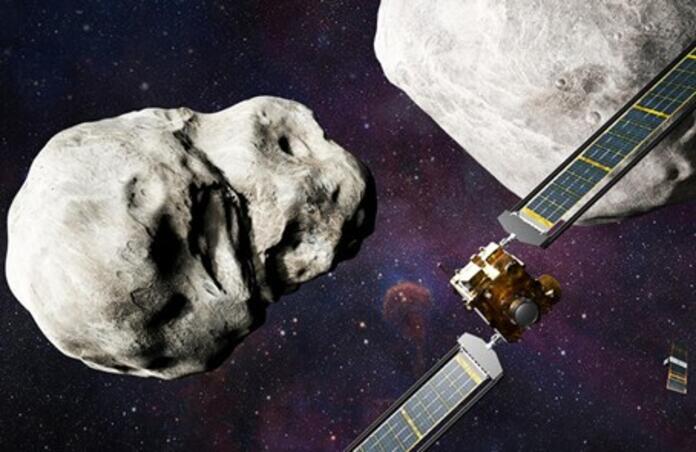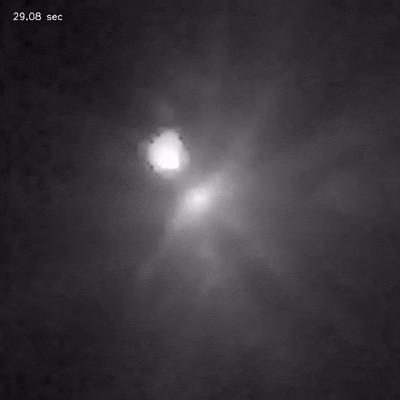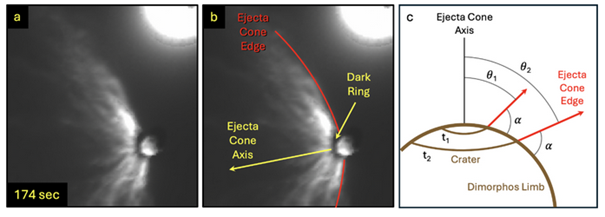Post-Impact Analysis of Ejecta from the DART Spacecraft Collision

On November 24th, 2021, NASA launched the Double Asteroid Redirection Test (DART) mission to explore the possibility of altering the orbit of an asteroid, should the need ever arise to prevent a potential impact with Earth. To achieve this, the DART probe was designed to crash directly into an asteroid, Dimorphos. The mission targeted a change in the orbital period around its companion, Didymos, of at least 73 seconds, with any changes of 10 minutes or greater signalling an overwhelming success. The probe made contact on September 26th, 2022, but not before separating from the Light Italian Cubesat for Imaging of Asteroids (LICIACube), an onboard satellite set to document the aftermath.
Later in October, NASA reported the initial results of the DART mission. Ground-based observatories confirmed a 32-minute reduction in the asteroid moon’s orbital period, far exceeding even the most optimistic projections. Previous analyses indicated that achieving such a change required a momentum transfer 3.6 times greater than that of the DART spacecraft, suggesting that material ejected opposite the flight path played a major role in boosting Dimorphus’ motion.

A recent report, led by Tony Farnham, details their analysis of the aftermath in the 29 to 243 seconds following the impact, using the data gathered by LICIACube. They focus on performing a full-scale analysis of the ejected material in all directions.
The team studied the pattern of 104 boulders thrown out by the DART impact. These boulders also carried more than three times the momentum of the DART spacecraft itself and were mostly ejected southward, orthogonal to DART’s path. Previous research demonstrates that such ejecta tend to be uniform, but the team hypothesise that two rocks at the impact site were disintegrated, causing a bias in the ejecta direction. They suggest that this uneven ejection of material could have induced a slight incline within the orbit, in addition to the aforementioned period change. This has yet to be observationally confirmed.

On the 7th of October last year, ESA launched a spacecraft for their Hera mission. Their goal is to survey the impact site on the surface of the asteroid, and more accurately determine any changes to the system’s orbits. The craft is expected to reach the system and deploy two surveillance satellites by December 2026.
--
Journal Source: T. L. Farnham et al., High-speed Boulders and the Debris Field in DART Ejecta, The Planetary Science Journal, Vol. 6, No. 7, (2025), DOI: 10.3847/PSJ/addd1a
Initial Report: https://telescope.live/blog/nasa-report-successful-outcome-dart-mission
Cover Image Credit: NASA/Johns Hopkins
